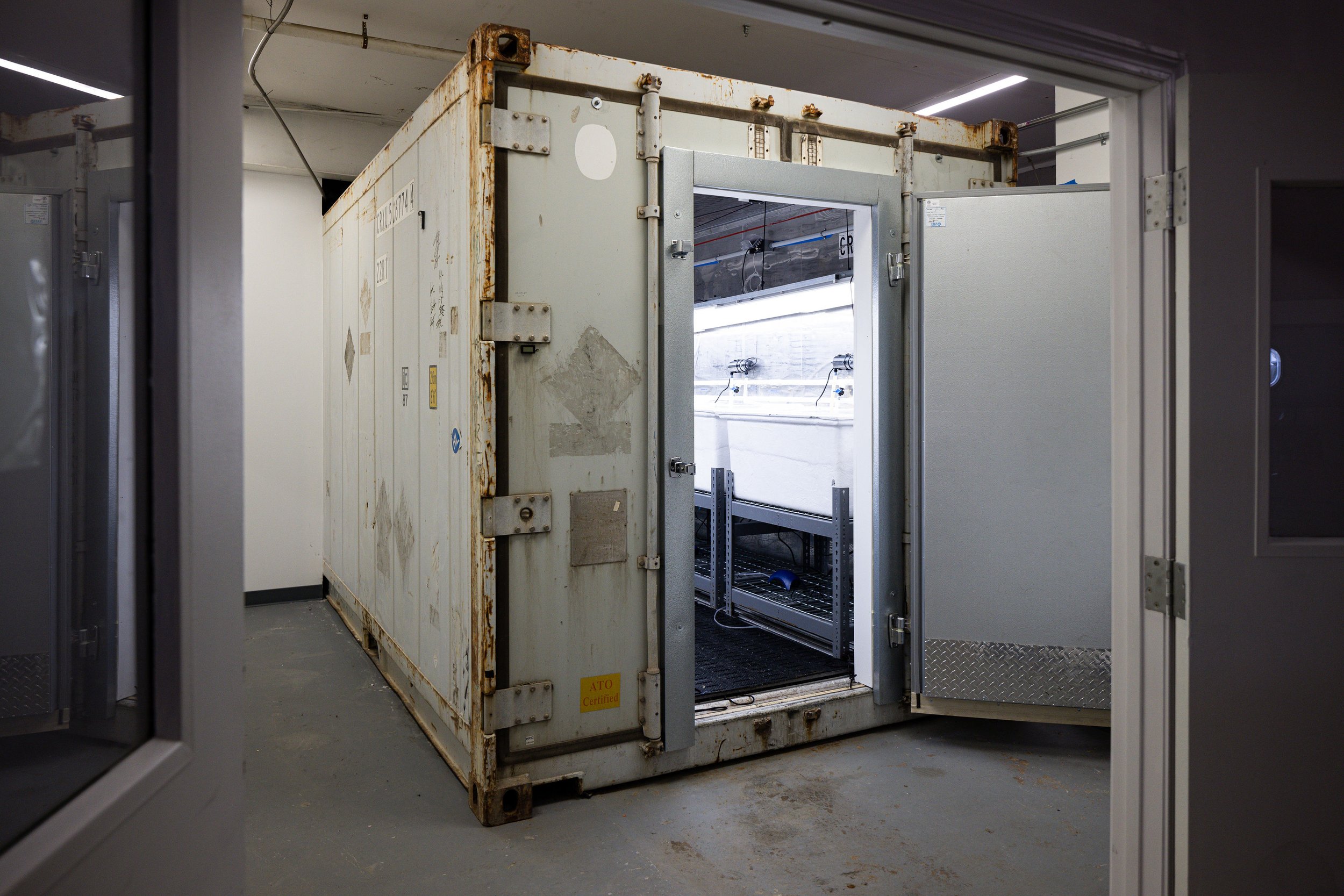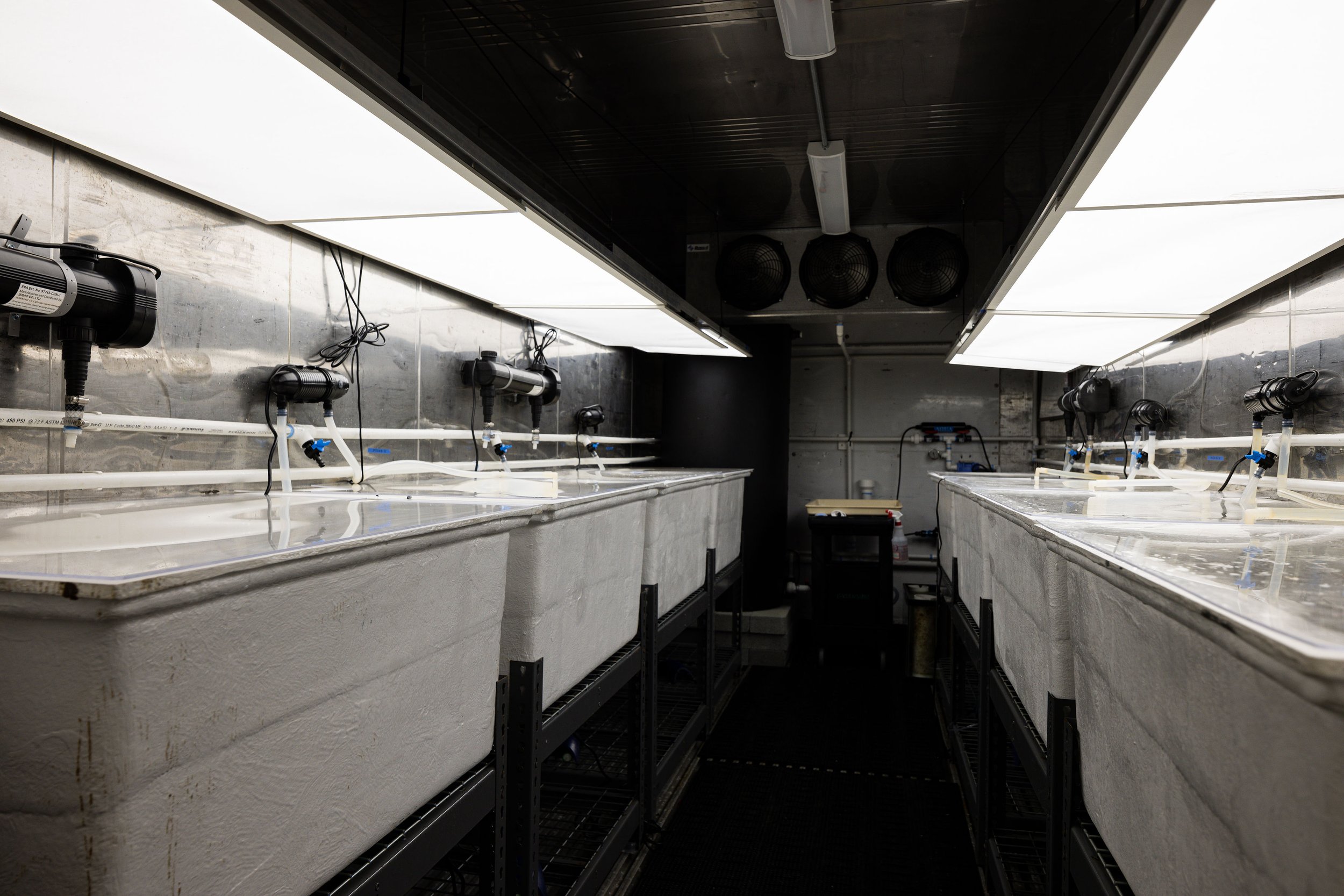Advancing Kelp Seed Infrastructure & Tech
Reliable and affordable kelp seed is critical to scaling the regenerative ocean farming industry. Through GreenWave’s Farmer Infrastructure program, we leverage our commercial-scale farm and seed production operations to develop solutions and best practices for consistent production, cost-effectiveness, and replication across the supply chain.
Using hatchery technologies adapted from resource-intensive academic settings, GreenWave launched the first affordable, commercial-scale kelp hatchery in the U.S. in 2016. Incremental expansion of the original facility resulted in complex systems with high maintenance requirements. At the same time, steadily increasing climate pressures in Long Island Sound started to delay the emergence of wild reproductive kelp used to initiate the seed production process, negatively impacting farm productivity.
Because GreenWave farms on the southern edge of kelp’s cultivation range in New England, we are feeling the impact of warming ocean temperatures that will have widespread effects on farmers in other regions. After the 2021 hatchery season, we set out to develop an improved nursery facility and learn how to domesticate kelp seed in order to help farmers in other regions get ahead of the climate threats.
“We’re a bellwether for national climate concerns,” says Director of Infrastructure Toby Sheppard Bloch. “The growing demand for seed and challenges in getting high-quality seed to farmers in a timely way is an urgent industry bottleneck. GreenWave is focused on replicating this solution to scale the industry.”
In response, GreenWave teamed up with a European-based global leader in seed propagation and breeding to revamp our facility and approach to seed production. In 2022, we implemented next-generation infrastructure designs and methodologies to develop a blueprint for modular, scalable nursery technologies. The improvements offer critical advantages that drive down labor requirements and create energy and management efficiencies that make it possible for ocean farmers to expand regional kelp seed supplies.
GreenWave’s new facility incorporates used and repurposed equipment to address critical biosecurity requirements in a cost-effective way. The purpose-built nursery is designed for scale and replicability, using an upcycled 20-foot refrigerated shipping container as the base. The container creates an opportunity to develop a replicable blueprint for reliable kelp seed production. An industry-standard design can make it easier for farmers to troubleshoot questions, make system improvements, and share their learnings out to other practitioners.
With an emphasis on improved water quality, energy efficiency, and farmer accessibility, the new nursery design has the capacity to generate twice the amount of seed using less than half of the labor and in one-third the space of our original facility. “We’re using readily-available, off-the-shelf equipment so farmers can expand their operations nimbly and affordably,” says Toby. GreenWave’s goal is to design straightforward processes and solutions so farmers can own and operate more of the seaweed supply chain.
Building on the critical work of Dr. Charlie Yarish and Scott Lindell to break dependence on wild harvest kelp seed, GreenWave is continuing collaborations with our European partner to pilot gametophyte culturing technologies. Using these methods, we can pause the kelp life cycle in our lab and hold the reproductive material in a latent state until we want to begin kelp seed production.
Gametophytes–the stage in sugar kelp’s life cycle before a sporophyte (kelp blade) forms–can multiply year-round. "This process minimizes the amount of reproductive material that needs to be extracted from wild populations for seed production," says GreenWave Hatchery Manager Michelle Stephens. "These techniques will support greater climate resiliency of kelp farmers and the industry as a whole."
Additionally, this approach gives farmers control over the outplanting timeline, allowing them to get kelp seed in the water at ideal temperatures and capture optimal nutrient and light conditions to maximize yield. GreenWave tested kelp seed produced from gametophyte cultures on our farm sites in Long Island Sound. “The early pilot results are stunning,” says GreenWave Co-Executive Director Bren Smith. “We outplanted two months earlier than previous seasons and we’re seeing twice the amount of kelp per foot than lines seeded using current industry practices.”
Wild Collected Seed: Outplanted 12/21/2022
Domesticated Seed: Outplanted 11/2/2022
GreenWave’s vision is to build a seed supply chain from the ground up that serves the commercial needs of farmers and supports scale across the regenerative ocean farming industry. GreenWave will continue to iterate on the new designs and techniques and develop blueprints and content that we will share out through a mix of future Hub resources, webinars, and in-person trainings. Stay tuned for updates and opportunities to learn more about this work.






